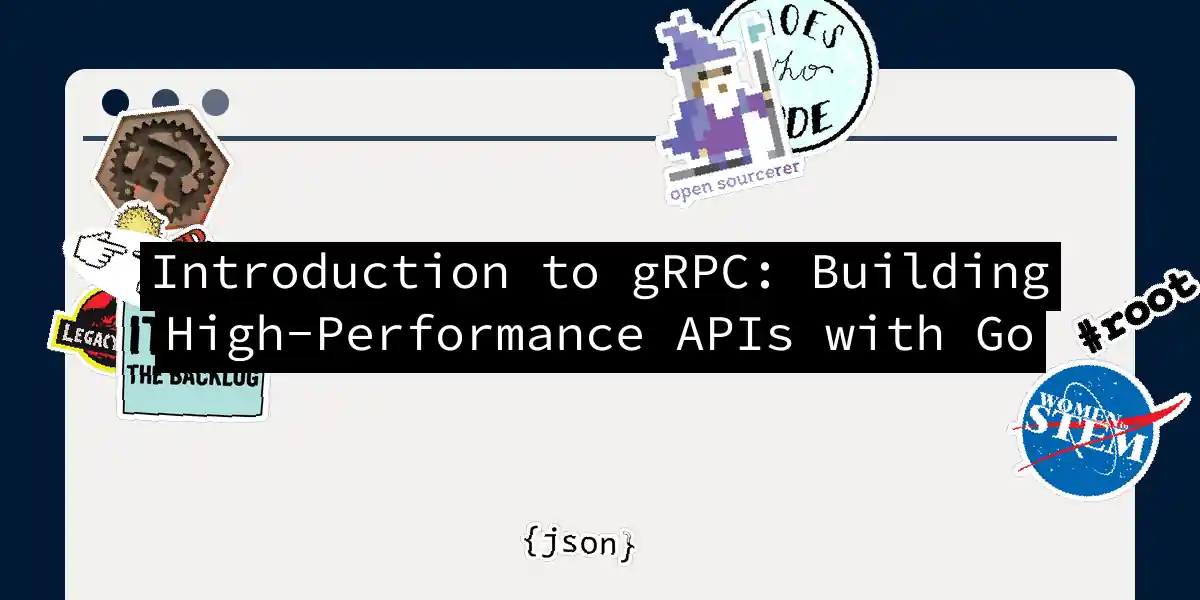What is gRPC?
Imagine you’re at a high-speed racing track, and instead of driving a vintage car, you’re behind the wheel of a sleek, modern sports car. That’s what gRPC feels like compared to traditional REST APIs. Introduced by Google in 2015, gRPC is a modern, high-performance RPC (Remote Procedure Call) framework designed to facilitate communication between client and server using Protocol Buffers and HTTP/2.
Protocol Buffers: The Secret Sauce
Protocol Buffers, or protobufs, are the data exchange format that makes gRPC so efficient. Unlike JSON, which is text-based and flexible but slower, protobufs are a strongly typed binary data interchange format. This means you define the data contract between multiple systems and compile it to a target programming language, ensuring consistency and speed.
Here’s a simple example of how you define a message in Protocol Buffers:
syntax = "proto3";
package orders;
service OrderService {
rpc AddOrder(AddOrderRequest) returns (AddOrderResponse) {}
}
message AddOrderRequest {
string customer_id = 1;
string product_id = 2;
int32 quantity = 3;
}
message AddOrderResponse {
string order_id = 1;
bool success = 2;
}
HTTP/2: The Turbocharger
HTTP/2 is the protocol that powers gRPC’s high-performance capabilities. It’s an optimized version of HTTP/1.1, using binary data instead of text and compressing headers to reduce overhead. This makes it perfect for real-time streaming and large data loads.
Pros and Cons of gRPC
Pros
- High Performance: gRPC is designed for high-performance applications, making it ideal for large-scale distributed systems.
- Efficient: Messages are up to 30% smaller than JSON messages, thanks to Protocol Buffers.
- Scalable: Automated code generation in various programming languages makes it widely usable.
- Real-Time Capabilities: Supports unary, server-side streaming, client-side streaming, and bidirectional streaming.
Cons
- Learning Curve: gRPC requires a steeper learning curve due to its unique architecture and use of Protocol Buffers.
- Limited Browser Support: gRPC is not directly compatible with browsers; you need a proxy or additional code for browser-server communication.
Building a gRPC API with Go
Let’s dive into creating a simple gRPC API using Go. Here’s a step-by-step guide:
Install the Necessary Tools:
go get google.golang.org/grpc/cmd/protoc-gen-go-grpc go get google.golang.org/protobuf/cmd/protoc-gen-goDefine Your Service: Create a
orders.protofile with the following content:syntax = "proto3"; package orders; service OrderService { rpc AddOrder(AddOrderRequest) returns (AddOrderResponse) {} } message AddOrderRequest { string customer_id = 1; string product_id = 2; int32 quantity = 3; } message AddOrderResponse { string order_id = 1; bool success = 2; }Generate the gRPC Code:
protoc --go_out=. --go_opt=paths=source_relative --go-grpc_out=. --go-grpc_opt=paths=source_relative orders.protoImplement the Service: Create an
orderservice.gofile:package main import ( "context" "fmt" "log" "google.golang.org/grpc" "example/orders" ) type orderService struct{} func (s *orderService) AddOrder(ctx context.Context, req *orders.AddOrderRequest) (*orders.AddOrderResponse, error) { log.Printf("Received request: %v", req) return &orders.AddOrderResponse{OrderId: "12345", Success: true}, nil } func main() { lis, err := net.Listen("tcp", "localhost:50051") if err != nil { log.Fatalf("failed to listen: %v", err) } s := grpc.NewServer() orders.RegisterOrderServiceServer(s, &orderService{}) log.Printf("gRPC server listening on port 50051") if err := s.Serve(lis); err != nil { log.Fatalf("failed to serve: %v", err) } }Start the Server:
go run orderservice.goCreate a Client: Create a
client.gofile:package main import ( "context" "fmt" "log" "google.golang.org/grpc" "example/orders" ) func main() { conn, err := grpc.Dial("localhost:50051", grpc.WithInsecure(), grpc.WithBlock()) if err != nil { log.Fatalf("did not connect: %v", err) } defer conn.Close() client := orders.NewOrderServiceClient(conn) req := &orders.AddOrderRequest{CustomerId: "123", ProductId: "abc", Quantity: 10} resp, err := client.AddOrder(context.Background(), req) if err != nil { log.Fatalf("could not add order: %v", err) } log.Printf("Order added: %v", resp) }Run the Client:
go run client.go
Sequence Diagram
Here’s a sequence diagram showing the interaction between the client and server:
Performance Improvements
gRPC’s performance is continuously being improved. For instance, optimizations in network utilization, CPU usage, and memory allocations have significantly enhanced its performance, especially on high-latency networks.
Using gRPC with Web Clients
While gRPC is perfect for server-to-server communication, it’s less straightforward for browser-server communication. You might need to use a proxy like grpc-gateway to translate gRPC calls into RESTful API calls that browsers can understand.
Conclusion
gRPC is not a replacement for REST or GraphQL but an alternative that shines in high-performance, real-time applications, and microservice architectures. Its use of Protocol Buffers and HTTP/2 makes it a powerful tool for building efficient APIs.
As you embark on your gRPC journey, remember that it’s a bit like driving that sports car: it takes some getting used to, but once you’re comfortable, you’ll be speeding through your development tasks in no time.
So, buckle up and enjoy the ride
